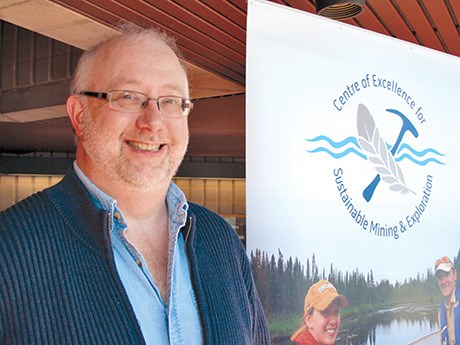Lakehead University centre encourages research, education and outreach
Sustainable, responsible mining is a concept that is relatively new in the industry, but one that is gaining traction. However, as straightforward as the concept is, there isn’t really a blueprint on how to achieve the goal. That’s part of what Lakehead University’s Centre of Excellence for Sustainable Mining & Exploration (CESME) hopes to achieve.
“We see ourselves as… the group that all sides can come and talk to because we don’t have an agenda,” said Dr. Peter Hollings, CESME director and chair of the Department of Geology at Lakehead University in Thunder Bay. Those sides include industry, communities, government, Indigenous groups, and other stakeholders across the region. “We’re an academic institution. We’re interested in research and providing unbiased sources of information.”
Launched in 2013, CESME’s goal is to “encourage and support research, education and outreach activities” in mining, particularly in Northern Ontario. Hollings said that all CESME activities fall under three main pillars: mining exploration, the (social, economic, and environmental) impact of mining and Indigenous engagement.
Hollings said that the program was modelled to some degree after other research centres, including the Australian Research Council’s Centre of Excellence in Ore Deposits (CODES) at the University of Tasmania, which is recognized as a leader in ore deposit research.
However, CESME’s wider scope makes it different from research centres across Canada and around the world, Hollings said.
“I looked at some of their structures and models, but they are very much geology-focused centres,” he said. “We’re doing it differently. (CESME) has that environmental, that First Nations component. I don’t know of another centre that is trying to incorporate all those things in the same sort of all-encompassing way that we are.”
Engagement and partnerships with First Nations, Métis, and other Indigenous people is an important part of mining in Northern Ontario.
“Our location is right in the middle of areas of high resource potential and strong First Nations/Métis presence, so there is that need (to do proper engagement). We think we’re uniquely placed to do that.”
That is especially apparent in Northern Ontario’s mineral-rich Ring of Fire, where development depends on so many factors including the goals of federal and provincial government agencies, industry partners, and area First Nations.
“I think for us, a lot of it is about engaging, it’s about training, it’s about trying to encourage the kids in those communities to come to university and get a science background,” he said.
Training in general is a large part of its mandate. A CESME brochure promotes the program as an opportunity for undergrads in Lakehead’s geology program to gain expertise normally only available to Masters- and PhD-level students. Hollings said that Lakehead is in discussions with Queen’s University to create a credit program in mining engineering for geology students at Lakehead – perhaps a certificate program or a minor degree program.
“One of the things we hear from the local companies is that they want more mining engineers. We’ve seen from the Northern Ontario School of Medicine and the law school (at Lakehead) that if you train them here, they are more likely to stay here.”
Sustainability is another focus, though the term itself is a bit of a misnomer.
“Sustainable mining is inherently impossible. As you remove the resource from the ground, it’s gone,” Hollings said.
However, mining activities themselves could create sustainable infrastructure. “What we need to do is find a way to leave a legacy of those activities that is sustainable: year-round roads, power lines so (remote First Nations) are not relying on diesel, community-based companies which can then get involved in the next phase of exploration somewhere else. You can leverage some of these activities to achieve that sustainability.”
Of course at its heart, CESME is a research and academic centre. Hollings said that the downturn in mining means that there wasn’t the same level of research funding as they had hoped, but that they’ve done well with the support they have had. CESME has a number of active research projects on a wide variety of topics from the history and economic impact of mining in Northern Ontario and the duty to consult on Treaty 3 lands to using cellulose-based flocculants for green mineral processing.
Ultimately, Hollings would like to see CESME help make the mining process “more efficient, more equitable, and more sustainable” for the benefit of all partners, including industry, communities, First Nations and Métis, and others.
“For me, success is going to be when we see a significant improvement in the nature of engagement between the partners involved in resource extraction in Northern Ontario,” Hollings said.



